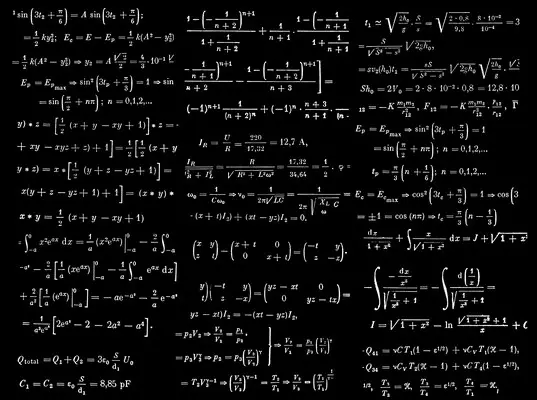Table of Contents
- Introduction
- Understanding the Nature of an ‘Interpret’ Essay Question
- Planning and Structuring Your Essay
- Incorporating Examples into Your Interpretation
- Balancing Depth and Brevity
- Potential Pitfalls and How to Avoid Them
- Polishing Your Essay
- Example Interpretation Scenario
- Final Thoughts
Introduction
An ‘interpret’ essay question can be a unique challenge in academic writing, particularly in sociology. Often, this type of question requires you to explore the meaning of a statement, concept, or phenomenon and to illuminate its significance in a broader context. The challenge stems from the need to demonstrate both your familiarity with relevant theories or frameworks, and your capacity to articulate how they apply in new or complex ways. Throughout this article, we will examine a clear strategy for addressing an ‘interpret’ essay question at the undergraduate level, focusing specifically on structure, clarity, and persuasion. By employing the methods discussed, you will be better equipped to write a compelling interpretive essay that not only meets academic expectations but also demonstrates advanced critical thinking.
Understanding the Nature of an ‘Interpret’ Essay Question
Defining “Interpret” in Academic Terms
When a question asks you to “interpret,” it prompts you to delve beyond surface-level definitions and explanations. Instead of simply stating what a concept is, you are asked to critically assess why it matters, how it evolves, and what underlying assumptions may shape its meaning. You may be required to tease out nuances, identify competing interpretations, or propose novel insights about the phenomenon. Thus, your role shifts from summarizing pre-existing information to creatively and critically offering new perspectives.
Importance of Interpretive Skills
Interpretive skills are essential in sociology. Society is composed of numerous interacting components, including culture, institutions, norms, and power dynamics. A sociological interpretation often requires analyzing social phenomena from multiple angles, addressing how historical context, group behavior, or structural inequalities might shape meaning. Hence, an interpretive essay becomes a way to demonstrate your awareness of the social complexity at play and your ability to convey new understandings about it.
Planning and Structuring Your Essay
Constructing a clear structure is one of the most critical steps in writing a compelling ‘interpret’ essay. An organized framework ensures that your argument remains coherent and persuasive, effectively guiding the reader from introduction to conclusion. Below is a recommended outline and breakdown of how each section functions.
1. Introduction
The introduction lays out the foundation of your essay and sets the tone. For an ‘interpret’ question, you might start by succinctly paraphrasing the question or prompt. This immediately signals your awareness of the topic and your plan to engage deeply with it. You can then contextualize why the topic is relevant to sociology. Conclude the introduction by providing a thesis statement that outlines the specific angle or argument your interpretive discussion will pursue.
Key Elements to Include in the Introduction:
- Contextualization: Place the concept or phenomenon within its sociological background.
- Purpose: Explain the reason you are interpreting this particular question.
- Thesis Statement: Present the guiding argument or central claim that your essay will support.
2. Explanation of Key Terms and Concepts
In order to interpret any statement properly, you need to define the principal ideas involved. If the prompt centers on a specific sociological term—such as “social identity” or “power structures”—make sure the reader understands what these terms mean. However, be careful not to lose the essay’s interpretive focus by merely listing definitions. Instead, weave clarifications into your interpretive approach, demonstrating why they matter for your overall argument.
Why This Section Is Crucial:
- Ensures common ground: The reader follows your discussion more readily if they understand how you are using specific terms.
- Highlights existing debates: If certain terms are contested, briefly introduce the debate to set the stage for your interpretation.
3. Literature and Context (If Applicable)
While the prompt specifically says do not use references, you may still need to acknowledge the broader academic landscape without citing specific works. For instance, you can allude to established theories, frameworks, or general scholarly conversations relevant to the concept you are interpreting. This is where you might mention, in general terms, that sociologists have explored competing viewpoints on the subject. Remember, you do not need direct references; simply allude to the existence of different approaches to demonstrate your awareness of the broader discourse.
4. Central Analysis
The heart of your essay is in your main analysis—the part where you systematically interpret the subject in light of sociological frameworks, historical contexts, or current trends. This is the section where you present logical arguments, discuss counterarguments, and thoroughly articulate your own perspective. Each paragraph should be focused and cohesive, beginning with a topic sentence that signals the main point of the paragraph.
How to Construct Paragraphs Effectively:
- Topic Sentence: State the core idea you will interpret or analyze.
- Explanation/Context: Provide brief context or clarification, ensuring the reader grasps why the point is relevant.
- Evidence or Logical Reasoning: Offer supporting details or arguments that back up your interpretation.
- Link to Main Argument: Conclude by connecting the paragraph’s analysis back to your broader thesis.
Example of a Paragraph Breakdown
Let’s imagine your essay focuses on how to interpret the concept of “power” in a sociological study. Below is a skeleton paragraph that exemplifies effective construction:
Topic Sentence: “One crucial way to interpret power within sociology is to view it as both relational and context-dependent.”
Explanation/Context: “Power does not exist in a vacuum; it is shaped by social structures, cultural norms, and interactions between groups.”
Evidence or Logical Reasoning: “Those who hold economic resources or institutional authority often possess the means to influence policy decisions and public opinion, illustrating how power emanates from and reinforces structured inequalities.”
Link to Main Argument: “Hence, by acknowledging power as relational, we deepen our understanding of how societal hierarchies maintain and reproduce themselves, tying back to the central claim that interpretation requires seeing power as multifaceted rather than monolithic.”
When you use this structure for multiple paragraphs, your essay flows systematically, guiding the reader through a reasoned argument rather than a jumble of thoughts.
5. Addressing Counterarguments
No interpretive essay is complete without acknowledging and responding to counterarguments. Even if you have a strong conviction about a specific interpretation, there will likely be alternative viewpoints. Including a brief section that addresses these viewpoints demonstrates:
- Your capacity to think critically about the subject.
- Awareness of complexity, which is essential in sociological writing.
- Confidence in your interpretation, as it allows you to engage with different perspectives without undermining your main argument.
When presenting a counterargument, ensure you do not misrepresent it in a way that makes it easier to dismiss (a fallacy often referred to as the “straw man” approach). Treat counterarguments with fairness before explaining why your stance still holds more validity or merits in this particular context.
6. Conclusion
Your conclusion should reiterate your main thesis and articulate the broader implications of your argument. An interpretive essay conclusion does not simply restate earlier points but offers a final reflection on why your interpretation holds relevance in broader sociological discourse. It can also highlight questions for further exploration, signifying that interpretation is an ongoing process rather than a final statement of truth.
Incorporating Examples into Your Interpretation
Get the full article AD FREE. Join now for full access to all premium articles.
View Plans & Subscribe Already a member? Log in.






